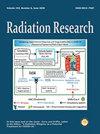在辐射暴露后,PUM1 和 PGK1 是优于 HPRT1、ITFG1、DPM1、MRPS5、18S rRNA 等已建立的生物测定相关管家基因的管家基因。
摘要
在基因表达(GE)研究中,需要用看家基因(HKGs)进行归一化处理。在大规模实验室间比对研究中,由于剂量估计值存在显著差异,研究小组采用了不同的 HKG。其中,18S rRNA HKG 以其稳健性而著称。然而,18S rRNA 拷贝数的高丰度需要稀释,这既费时又可能造成误差。本研究旨在找出最有前途的香港开奖现场结果直播,这些香港开奖现场结果直播在辐照后显示出最小的辐照诱导 GE 变异。在本研究的筛选阶段,分析了 35 种香港组蛋白。其中包括在大规模生物模拟研究中使用的部分 HKGs(ITFG1、MRPS5 和 DPM1),这些 HKGs 未被预先设计的 96 孔平台所覆盖,该平台由另外 32 个用于不同辐照的 HKGs 组成。共检测了 41 个样本,包括 27 个体内外 X 射线辐照血液样本(0、0.5、4 Gy)、6 个来自两个细胞系(U118、A549)的 X 射线辐照样本(0、0.5、5 Gy)以及 8 个非辐照组织样本,以涵盖多个生物实体。在独立验证阶段,利用三项研究中已储存的材料,对另外 257 份血液样本中最合适的候选基因进行了检验。其中包括 100 份来自体外 X 射线照射(0-4 Gy)健康供体的血液样本、68 份来自 5.8 Gy 照射(钴-60)猕猴(RM)(LD29/60)的血液样本(收集时间为照射后 0-60 天),以及 89 份来自化疗(CTx)乳腺肿瘤患者的血液样本。在以前的研究中,CTx 和辐射诱导的基因组学变化具有可比性。我们分离了 RNA 并将其转化为 cDNA,然后使用 TaqMan 检测法和定量 RT-PCR 对 GE 进行量化。我们使用原始周期阈值(Ct)计算标准差(SD)和四分位数间距(IQR),以此衡量基因组差异,并据此对香港基因组进行排序。通过参数 t 检验和非参数 Kruskal Wallis 检验以及线性回归分析,研究了剂量、时间、年龄和性别对 GE 变化的影响。一般来说,使用 SD 或 IQR GE 方差计量法得出的排名结果相似,表明 GE 值分布紧密。在筛选阶段的前十个最合适基因中,PUM1 和 PGK1 的方差最小。在筛选阶段,MRPL19 在前十个最合适的基因中只有血液和细胞的方差较低,但某些比较表明 MRPL19 与剂量有微弱的关联(P = 0.02-0.09)。在验证阶段,这些结果得到了证实。在这里,PUM1 和 PGK1 的 IQR Ct 值与 X 射线照射血液样本等的原始 Ct 值相差 0.6,这被认为是方法学差异导致的预期 GE 差异。总体而言,与 18S rRNA 相比,这两个基因的 GE 方差相当或更小。与 PUM1 和 PGKI 的 IQR GE 值相比,生物测定香港组 HPRT1 的 GE 值增加了 2.5 倍,生物测定香港组 ITFG1、MRPS5 和 DPM1 的 GE 值与之相当。发现 ITFG1 和 MRPS5 存在显著的剂量依赖关系(P = 0.001-0.07),而 HPRT1 和 DPM1 则普遍不存在或关系较弱(P = 0.02-0.07)。总之,考虑到基因变异和基因变异与剂量的不良关联,在所研究的 35 种香港基因中,PUM1 和 PGK1 最有希望用于辐照研究。In gene expression (GE) studies, housekeeping genes (HKGs) are required for normalization purposes. In large-scale inter-laboratory comparison studies, significant differences in dose estimates are reported and divergent HKGs are employed by the teams. Among them, the 18S rRNA HKG is known for its robustness. However, the high abundance of 18S rRNA copy numbers requires dilution, which is time-consuming and a possible source of errors. This study was conducted to identify the most promising HKGs showing the least radiation-induced GE variance after radiation exposure. In the screening stage of this study, 35 HKGs were analyzed. This included selected HKGs (ITFG1, MRPS5, and DPM1) used in large-scale biodosimetry studies which were not covered on an additionally employed pre-designed 96-well platform comprising another 32 HKGs used for different exposures. Altogether 41 samples were examined, including 27 ex vivo X-ray irradiated blood samples (0, 0.5, 4 Gy), six X-irradiated samples (0, 0.5, 5 Gy) from two cell lines (U118, A549), as well as eight non-irradiated tissue samples to encompass multiple biological entities. In the independent validation stage, the most suitable candidate genes were examined from another 257 blood samples, taking advantage of already stored material originating from three studies. These comprise 100 blood samples from ex vivo X-ray irradiated (0-4 Gy) healthy donors, 68 blood samples from 5.8 Gy irradiated (cobalt-60) Rhesus macaques (RM) (LD29/60) collected 0-60 days postirradiation, and 89 blood samples from chemotherapy-(CTx) treated breast tumor patients. CTx and radiation-induced GE changes in previous studies appeared comparable. RNA was isolated, converted into cDNA, and GE was quantified employing TaqMan assays and quantitative RT-PCR. We calculated the standard deviation (SD) and the interquartile range (IQR) as measures of GE variance using raw cycle threshold (Ct) values and ranked the HKGs accordingly. Dose, time, age, and sex-dependent GE changes were examined employing the parametrical t-test and non-parametrical Kruskal Wallis test, as well as linear regression analysis. Generally, similar ranking results evolved using either SD or IQR GE measures of variance, indicating a tight distribution of GE values. PUM1 and PGK1 showed the lowest variance among the first ten most suitable genes in the screening phase. MRPL19 revealed low variance among the first ten most suitable genes in the screening phase only for blood and cells, but certain comparisons indicated a weak association of MRPL19 with dose (P = 0.02-0.09). In the validation phase, these results could be confirmed. Here, IQR Ct values from, e.g., X-irradiated blood samples were 0.6 raw Ct values for PUM1 and PGK1, which is considered to represent GE differences as expected due to methodological variance. Overall, when compared, the GE variance of both genes was either comparable or lower compared to 18S rRNA. Compared with the IQR GE values of PUM1 and PGKI, twofold-fivefold increased values were calculated for the biodosimetry HKG HPRT1, and comparable values were calculated for biodosimetry HKGs ITFG1, MRPS5, and DPM1. Significant dose-dependent associations were found for ITFG1 and MRPS5 (P = 0.001-0.07) and widely absent or weak (P = 0.02-0.07) for HPRT1 and DPM1. In summary, PUM1 and PGK1 appeared most promising for radiation exposure studies among the 35 HKGs examined, considering GE variance and adverse associations of GE with dose.

 求助内容:
求助内容: 应助结果提醒方式:
应助结果提醒方式:


